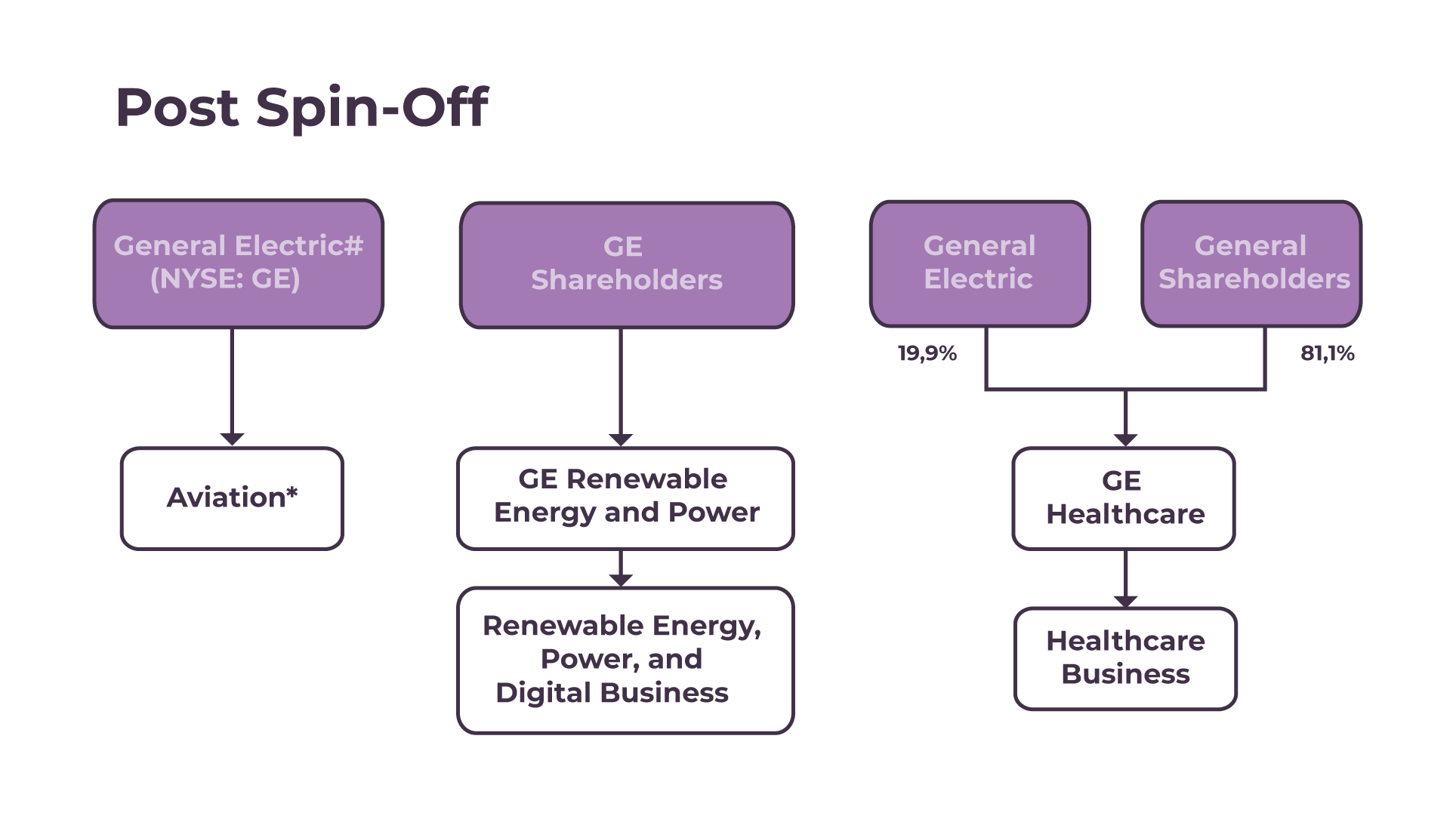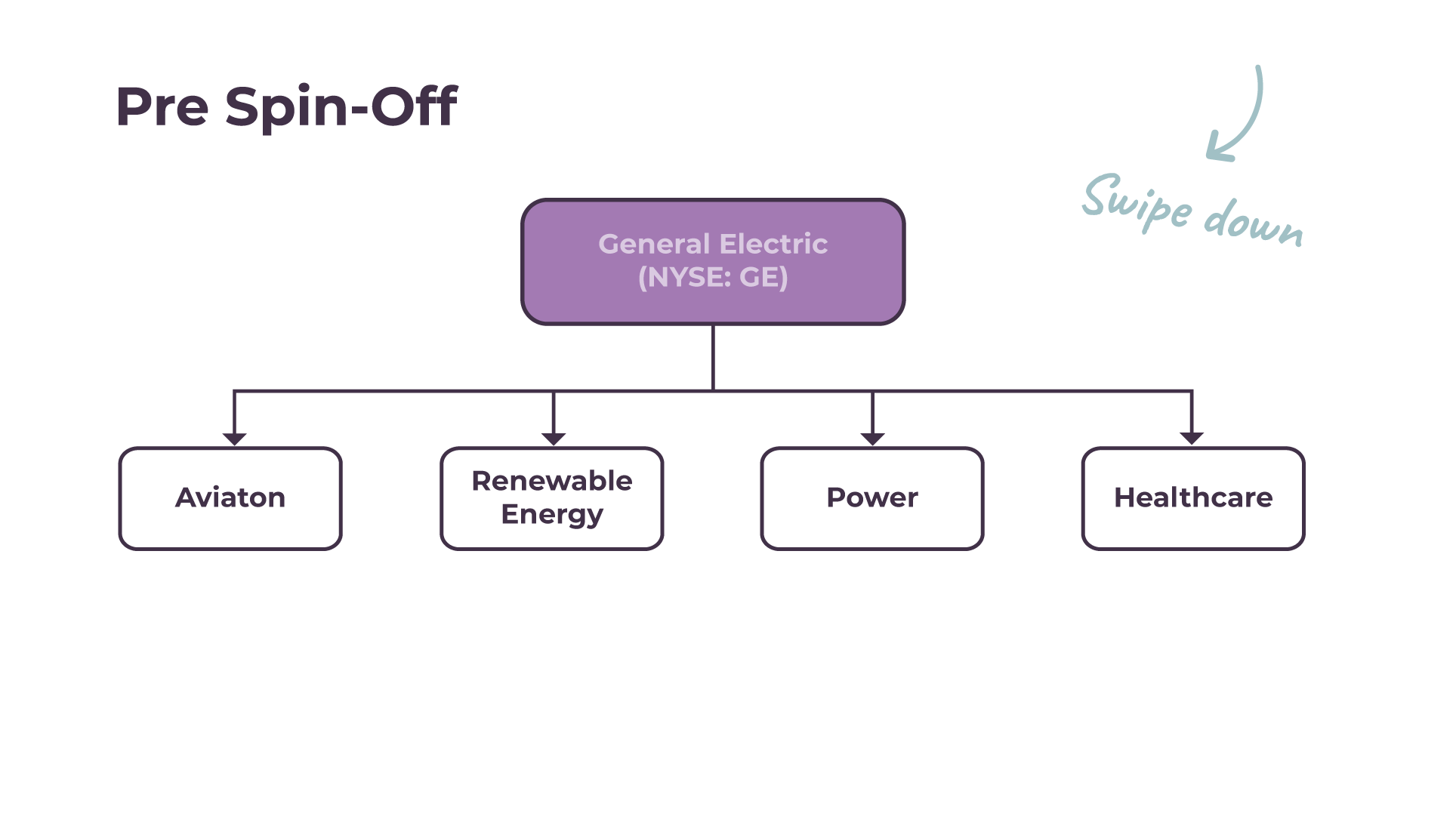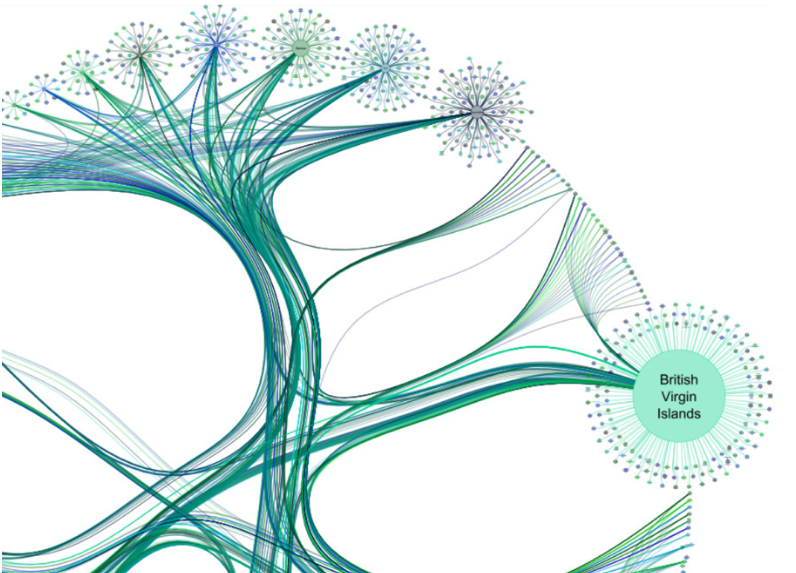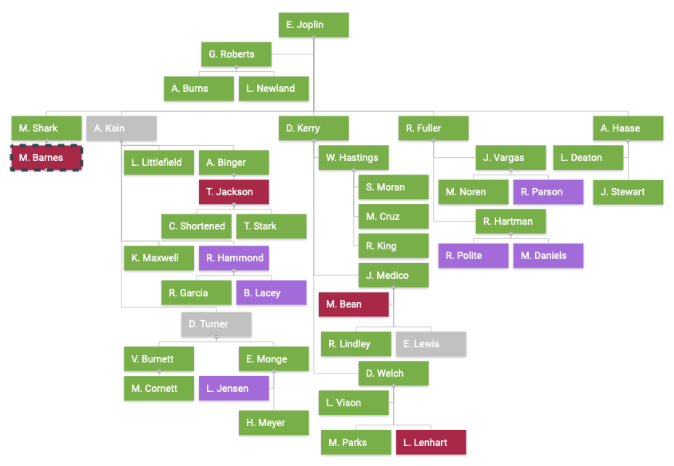Visualize & Optimize Company Structures with GraphsVisualizing relationships and resources for organizational optimization.
To maximize business returns, it's important to ensure all parts of the company work together efficiently. Understanding corporate and organizational structures are essential for success, whether the company is big or small, simple or complex, local or transnational. Visualization is crucial for understanding, because humans process images faster and retain visual information better than text. Without diagramming, complex corporate structures are incomprehensible.
Our diagramming SDK, yFiles, simplifies visualizing company structures. It makes data silos and static charts a thing of the past and lets you map and visualize all possible combinations of intra- and inter-company structures, in order to then analyze and optimize them based on real-time insights. Replacing static charts with flexible, interactive diagrams provides a comprehensive and dynamic view of even the most convoluted organization. Visualization grants insights, exposes inefficiencies, and builds consensus through a common view of complex structures and relationships.


We´d love to help you. Reach out and we'll get in touch with you.
Your message has been sent.
Static map or dynamic system?
Visualizing a company structure is indispensable, but it’s only the first step. Consider this diagram of the global mobile telecom ecosystem around 2010. 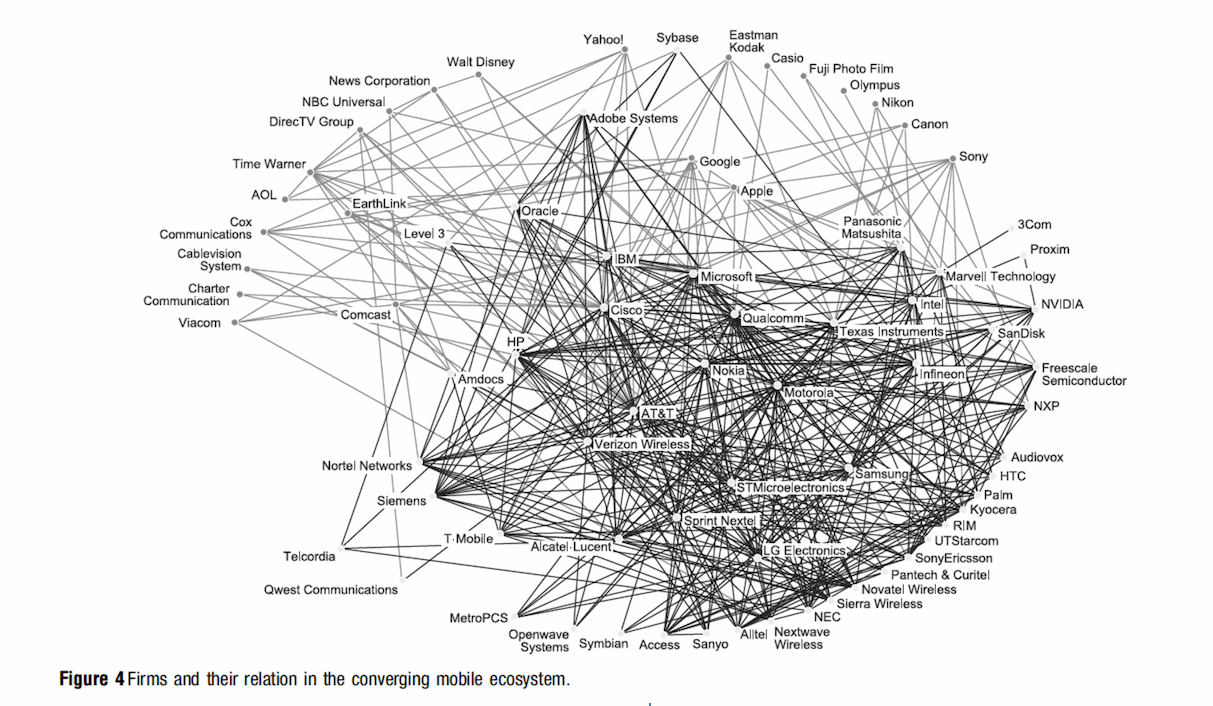 Source: Visualization of Interfirm Relations In a Converging Mobile Ecosystem.
Source: Visualization of Interfirm Relations In a Converging Mobile Ecosystem.
As a means of communicating the complex interrelations in the ecosystem, this single image is more powerful than pages of text. But beyond that, it’s basically useless.
Analyzing, comprehending, and potentially optimizing the ecosystem requires interactive tools that support functions like isolating and magnifying nodes, highlighting orders of relationships, and dynamically transforming the diagram format. By the same token, today’s volatile, fast-changing business environment calls for interactive tools to diagram and manage even simple company structures.
Did you know?
Our diagramming SDK can import data from any source – including Excel, JSON files, relational databases, graph databases, and everything you can access programmatically.
 Company structures can be complex, with many layers of management, teams, and departments. Visualizing these structures with diagrams can help leaders and employees better understand their roles and responsibilities. yFiles provides powerful tools for creating these diagrams, allowing for customization and flexibility to meet the needs of any organization.Sebastian Niedworok, Consultant, yWorks
Company structures can be complex, with many layers of management, teams, and departments. Visualizing these structures with diagrams can help leaders and employees better understand their roles and responsibilities. yFiles provides powerful tools for creating these diagrams, allowing for customization and flexibility to meet the needs of any organization.Sebastian Niedworok, Consultant, yWorks
About yFiles: The graph visualization SDK
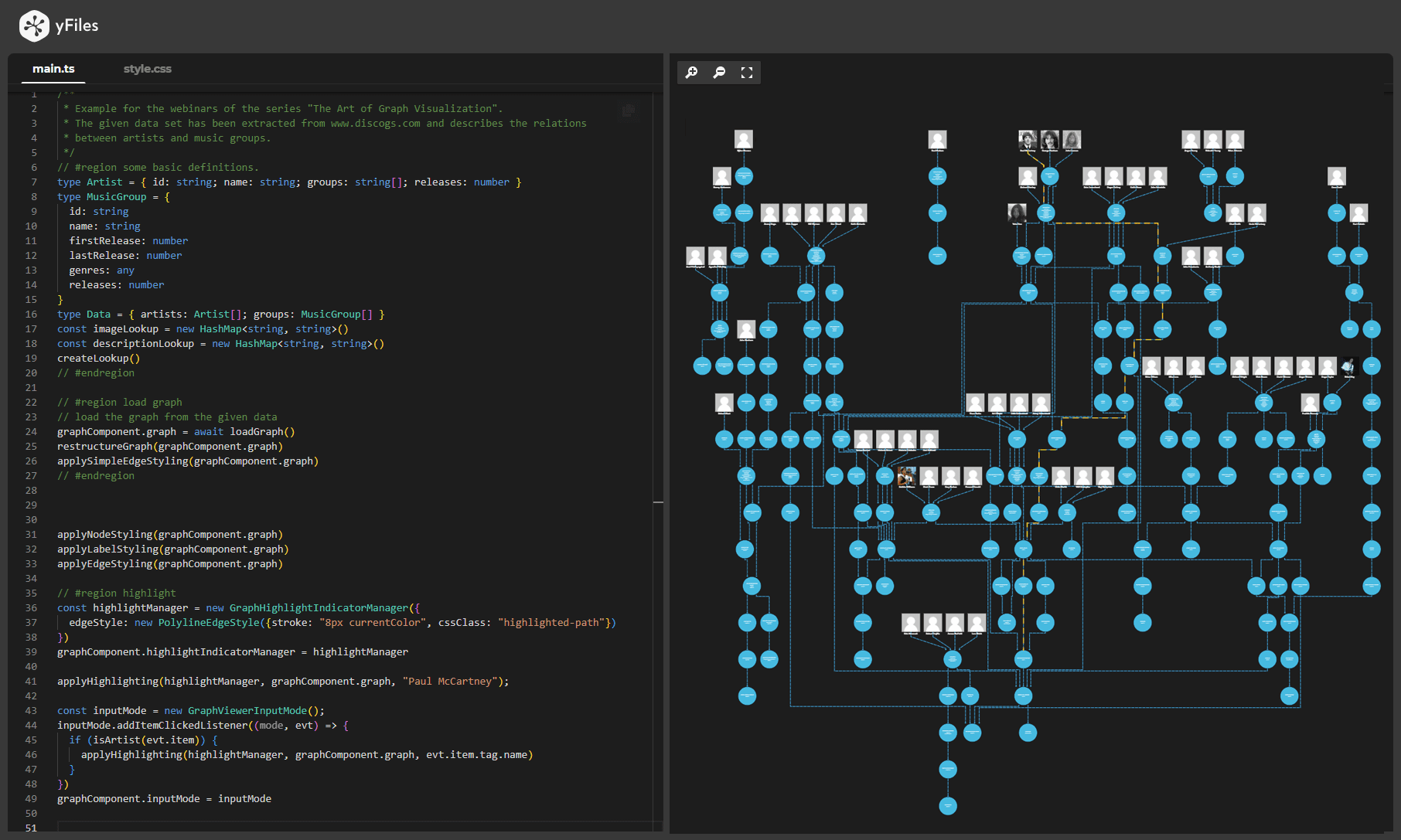
yFiles is your go-to SDK for crafting advanced graph visualizations, whether you're working with Web, Java, or .NET technologies. Its unmatched flexibility and scalability enable you to convert complex data into clear, actionable visuals, fitting for both enterprise and startup needs.
With yFiles, you're equipped for the future—supporting any data source while maintaining strong data security. Getting started is seamless, thanks to over 300 source-code demos, thorough documentation, and direct access to core developer support. These resources are available even during your free trial.
Backed by 25 years of graph drawing expertise, yFiles is trusted by top companies worldwide for their most critical visualization tasks.
Discover yFiles11 reasons why developers choose yFiles, the superior diagramming SDK
Intra- and inter-company relationships
Explore in yEd live
GE organization structure
Spin-off research
The spin-off strategy being implemented by GE is an example of how company structures can evolve over time to adapt to changing business needs and priorities. By creating a separate business unit for GE Renewable Energy, the company is reorganizing its operations to better align with its strategic focus on this area. This type of restructuring can help companies streamline their operations, reduce costs, and create a more efficient and effective organizational structure. The resulting independent companies can also better pursue their own growth strategies and investments, without being constrained by the broader organizational goals and priorities of a larger entity. Overall, the GE spin-off illustrates how company structures can be adapted to better reflect business realities and maximize value for shareholders.
Company ownership
Interactive live demo
yFiles React Company Ownership Component
Our easy-to-use React component, leveraging the powerful yFiles library, enables you to effortlessly integrate dynamic and interactive corporate ownership charts into your applications.
Enrich user engagement and simplify the exploration of intricate company hierarchies.
Read moreDocumentationGithubNPM
Fraud and anti-money-laundering detection
Interactive live demo
Personnel organization charts
Interactive live demo
And you can do even more with yFiles
Many approaches can be used to design, monitor, and continuously improve processes. yFiles supports all of them – from depicting very large datasets and using visualizations like BPMN diagrams, flowcharts, network diagrams, and data flow diagrams to planning the movement of goods within your company. yFiles also provides many opportunities for analyzing data and generating insights.
Explore the interactive live demos that show the SDK’s strengths in supply chain management. The source code of the demos is included in yFiles – even in the free trial!
By the way, yFiles has a special talent: It adapts to any model, method, and scenario. Yes, even the ones we haven’t thought of yet. Just get in touch! Together, we’ll see how yFiles can meet your diagramming needs.
Do you have a data visualization challenge?

Ask our Customer Success Team!
You will receive assistance from our Customer Success Team, whether you require technical support or have questions about our licenses or your evaluation.
Email: hello@yworks.com
Phone: +49 7071 9709050
Recap
Optimize corporate structures with powerful diagramming solutions
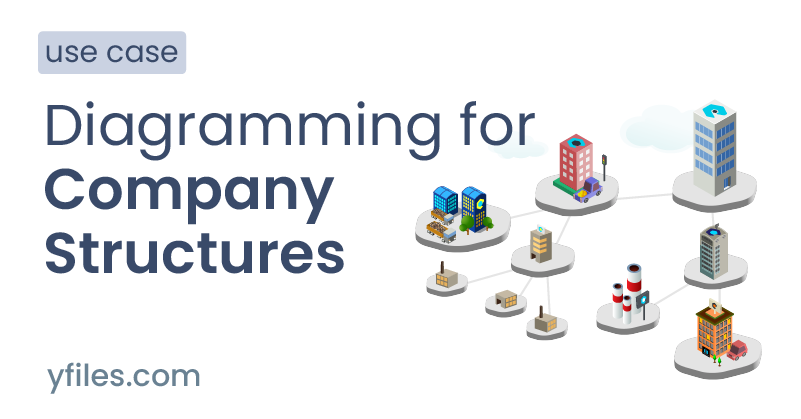
Corporate structure visualization displays how companies, divisions, and ownership relate, helping organizations understand and optimize their operations. The page highlights how yFiles enables businesses to move beyond static org charts by creating interactive, data-driven diagrams that reveal complex company relationships and real-time insights.
yFiles is especially effective for visualizing intra- and inter-company links, ownership structures, and for tackling challenges like fraud detection through clear mapping of connections. The SDK easily integrates with business data sources and supports use cases such as advanced org charts, compliance visualization, and investigations of company networks.
Developers can embed yFiles diagrams or leverage ready-to-use React components for flexible integration. Related demos and solutions explore further applications like supply chain analysis, making yFiles a versatile choice for any corporate structure visualization need.










